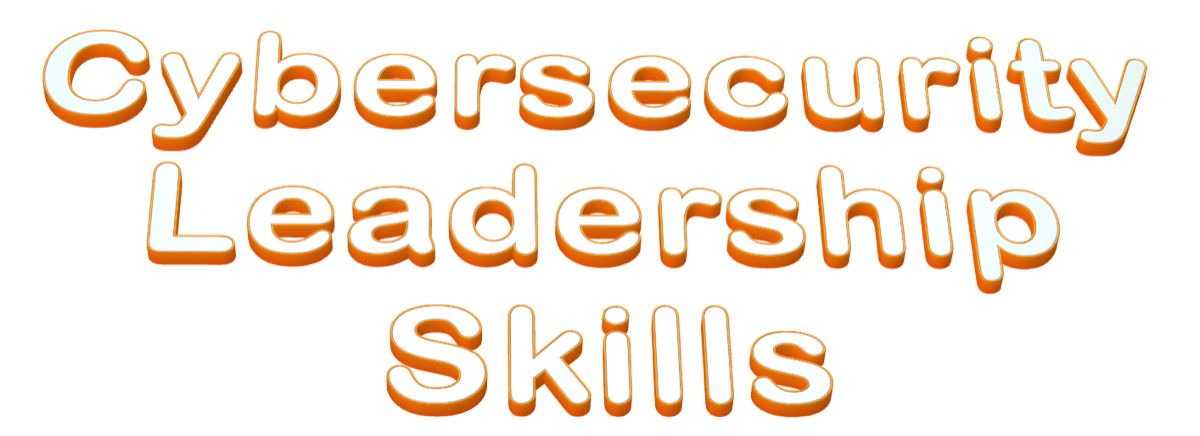Cybersecurity leadership can vary greatly depending on the company, market, industry sector, regulatory weight, and how boards and executive leadership view cybersecurity risk. Most are familiar with the Chief Security Officer (CSO), Chief Information Security Officer (CISO), Business Information Security Officer (BISO), Technical Information Security Officer (TISO), and Information Security Officer (ISO) as leadership in this space. Some of those roles and functions translate into government roles and functions. The exception is that the government, whether DoD or Federal, has Information Assurance Managers (IAM), Information Assurance Officers (IAO), Information System Security Managers (ISSM), and Information System Security Officers (ISSO) with specific defined roles and functions.
Levels for these roles can range from an executive at a Vice President level to directors or senior managers. There is a lot of debate on this, and some companies still have CISOs and cybersecurity organizations reporting to CIOs, CTOs, CFOs, and General Counsel even though the role should accordingly report to the CEO as a peer to CIOs and CTOs. Likewise, the Chief Risk Officer (CRO) role is starting to get folded under cybersecurity, and recently, the Chief Cybersecurity Officer role has made its way into the mix. There are varying degrees of opinion within this space, with some consensus, but most debates here tend to get contentious quickly.
Fractional or virtual CISOs and BISOs can be found in the commercial space. These are usually consulting roles that may also have cybersecurity program delivery responsibilities.
Main Purpose
The main purpose of this focus area is to develop a consistent, standardized perspective for skills relevant to cybersecurity leadership across government, corporate, commercial, and product role areas. Document core competencies and tasks common across all types of cybersecurity leaders. Ensure competency areas and tasks are aligned with the NIST NICE Framework and Skills for the Information Age (SFIA). Expand on the NIST NICE Framework, where it falls short in overall competencies and relevance. Integrate the SFIA to provide a well-rounded view.
Capability
One part of conducting a capability assessment is developing the skills and capabilities of cybersecurity leaders. The contained competencies and tasks provide a consistent and standardized view of capability. The competencies provide input to cybersecurity capability assessments. A gap analysis is then generated to determine capability. The gap analysis and capability assessment inform cybersecurity strategy and the cybersecurity program’s target operating model for the training needed to mitigate gaps in capability.
Competency
Competency areas are broken down into areas of commonality that all cybersecurity leaders would need to have as a standardized competency view. The common core competencies provide standardized competency areas consistent across cybersecurity leadership roles and functions.
Tasks
Task areas are broken down into areas of commonality that cybersecurity leadership would be fulfilling as part of day-to-day work efforts. The core task areas provide standardized areas consistent with cybersecurity leadership roles and functions.
Cybersecurity leadership types are divided into government, corporate, commercial, and product to acknowledge core differences. In this space, there are those running programs or those consulting on the delivery of those programs. There is not a lot of variation in that perspective.
One of the critical elements of standardization around competencies and tasks is developing consistent job descriptions and titles. Currently, the variation and variety of job descriptions and titles in the cybersecurity leadership space are immense and inconsistent or not standardized. In addition, there is a misunderstanding of necessary or needed skill sets or the differences between cybersecurity leadership roles and functions. Subsequently, this leads to confusion about what the role should be doing or encompass from a skill set perspective. There is still a lot of debate over how to position CSO, CISO, BISO, TISO, ISO, VP, Director, and Manager within an organization. Likewise, there is some debate on whether the titles reflect modern paradigms. Recently, the Chief Cybersecurity Officer title and role has come into the mix for additional confusion.
The skills, competencies, and tasks are presented in a manner executive leaders can pull from to develop consistent job descriptions. The premise presented here will help reduce job descriptions and title variations while producing more targeted and appropriate roles and functions within cybersecurity leadership. As a result, companies across industry sectors can standardize their job descriptions, position titles, and position levels.
Government
Government cybersecurity leaders work in government environments, leading and managing cybersecurity programs, subprograms, and the teams supporting cybersecurity operations. Cybersecurity leaders fall into strategic, tactical, or operational categories or stretch across each to achieve vision, mission, and direction.
The main difference here is security clearance requirements.
Roles and functions will follow the NIST NICE Framework.
Prime and subcontractors would fall more into this category.
Corporate
Corporate cybersecurity leaders work in corporate environments, leading and managing cybersecurity programs, subprograms, and the teams supporting cybersecurity operations. Cybersecurity leaders fall into strategic, tactical, or operational categories or stretch across each to achieve vision, mission, and direction.
Commercial
Commercial cybersecurity leaders working in commercial environments tend towards fractional/virtual cybersecurity leader roles while also filling a leadership role for the integrator, value-added reseller, and consulting company they work for.
Generally, this is a consultative role with no direct reports.
Security clearance requirements may exist if working directly with government agencies, a prime, or a subcontractor.
Product
Product cybersecurity leaders in this space may stretch between corporate and product environments to deliver corporate and product-level cybersecurity. Likewise, cybersecurity leaders will represent a SaaS platform or other cybersecurity tools at conferences and trade shows.
The line between corporate and product can blur here since all companies sell something. This is more specific to a cybersecurity vendor or Saas Platform.
Security clearance requirements may exist if working directly with government agencies, a prime, or a subcontractor.
Cybersecurity Leadership Skills Matrix
The cybersecurity leadership skills matrix combines the Skills for the Information Age (SFIA) and the NIST NICE Framework. The spreadsheet helps align skills for roles and functions.
Currently, the skills matrix is under construction.

Cybersecurity Leadership Related Certifications
Cybersecurity leadership has a limited perspective when it comes to certifications. When moving into these roles, prior certifications built up over time are beneficial, but experience is more important. Likewise, soft skills and the ability to influence, coach, mentor, budget, forecast, communicate, and drive strategy are the skills desired over hands-on keyboard technical skills. CISO program certificates from major universities and other executive training have more weight here than certifications.
Getting certifications is a personal choice. It is generally up to the individual to decide whether they want to put the time, effort, and money into achieving them. Some hiring managers want to see them, while others do not. Additionally, please note that the mileage may vary depending on the quality of learning outcomes associated with certifications.
General Certifications
Specialty Certificates
As a working cybersecurity professional, every attempt is made to separate professional and personal endeavors in a manner consistent with reducing conflicts of interest and maintaining ethics. Statements contained within this site are the explicit and implicit goals, objectives, endorsements, and educated opinion of the author of this site and not those of current or former employers.

